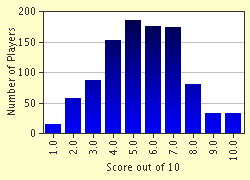Quiz Answer Key and Fun Facts
1. In 1995, Christian Spurling admitted to having helped fake a photo of this in 1934.
2. In a famous hoax perpetrated in England in 1917, two girl cousins produced photos of these mythical creatures that stumped even experts.
3. This hoax, which has been called "America's Greatest Hoax", even had PT Barnum of circus fame in on the act. In 1869, a phoney fossil of a giant was unearthed on a farm in Cardiff, New York. What happened to the relic known as the Cardiff Giant?
4. One of the most famous hoaxes of all time began in 1976, when husband and wife George and Kathy Lutz conned a man named Jay Anson into writing their memoirs about the time they spent in a supposedly haunted house. What was the name of the US town that the house was in?
5. You may have heard of the famous archaeological hoax in which fake fossils were buried in a site known as Piltdown - but where exactly is Piltdown?
6. Soon after his death in November 2002, the family American Ray Wallace, admitted that he had faked evidence of this creature in 1967.
7. In 1972, author Clifford Irving was sentenced to 14 months in prison when it was discovered that a biography he had written was a fake. About whom was the biography?
8. In 1991, two men named Doug Bower and David Chorley made international headlines when they admitted to having faked these.
9. One of the world's most talented hoaxsters was a Dutch painting dealer named Henricus Antonius van Meegeren, who forged and sold paintings of a famous artist. Whose paintings did he copy?
10. In 1996, a man named Allan Sokal submitted a phoney article to a scientific journal to see if it would get published (it did). What was the name of the journal?
Source: Author
bullymom
This quiz was reviewed by FunTrivia editor
bloomsby before going online.
Any errors found in FunTrivia content are routinely corrected through our feedback system.


